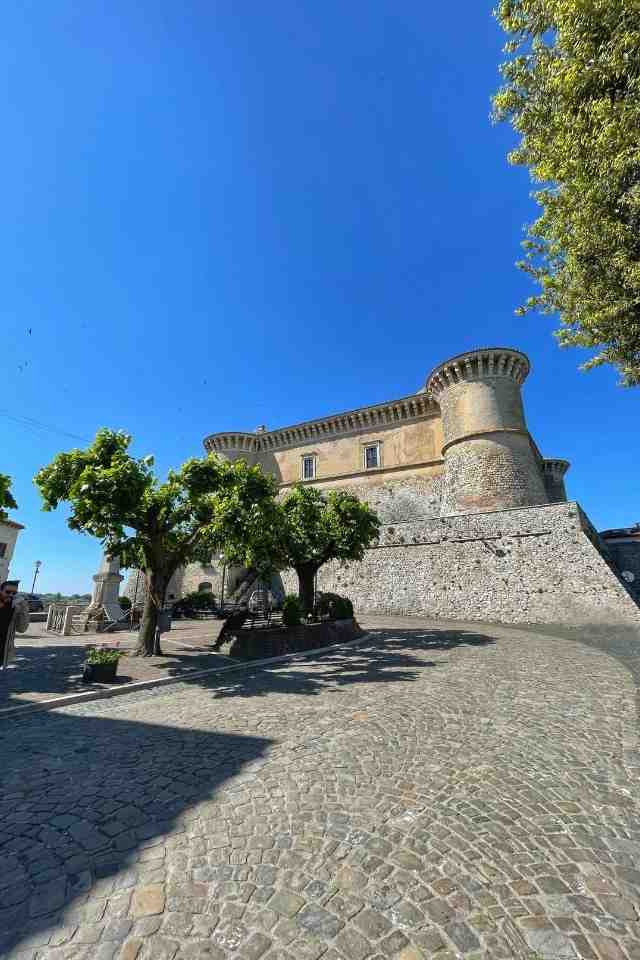
punto di interesse
point of interest


Placed in an hill which dominate the Tevere Valley, surrounded by the houses of the village, there is the possent Castle of Alviano.
The Castle of Aviano was built around the 996 for the interest of Count Offredo, progenitor of the future Alviano’s Family. Then, with the help of the Pontificium State, grew in power and became one the most powerful realities of the south of Umbria.
The argues between the guelphs and ghibellines, showed the Castle belogon part of one and after the other side, until after the destruction by Chiaravalle, the Castle became in 1495, thanks to Bartolomeo of Alviano, the real Renaissance fortified stately residence that we know now.
In 1543 Isabella, nephew of Bartolomeo and bride of Federico Cesi I, exchanged the feud of Alviano with the feud of Acquasparta, leaving to the Farnese family.
During the years the castle missed most of its military role to become a complex only for living and had hosted different noble families of the periodo until in 1654 Olimpia Pamphili buyed the property.
Today the Castle is owned by the Municipality which has also made it its headquarters.

Placed in an hill which dominate the Tevere Valley, surrounded by the houses of the village, there is the possent Castle of Alviano.
The Castle of Aviano was built around the 996 for the interest of Count Offredo, progenitor of the future Alviano’s Family. Then, with the help of the Pontificium State, grew in power and became one the most powerful realities of the south of Umbria.
The argues between the guelphs and ghibellines, showed the Castle belogon part of one and after the other side, until after the destruction by Chiaravalle, the Castle became in 1495, thanks to Bartolomeo of Alviano, the real Renaissance fortified stately residence that we know now.
In 1543 Isabella, nephew of Bartolomeo and bride of Federico Cesi I, exchanged the feud of Alviano with the feud of Acquasparta, leaving to the Farnese family.
During the years the castle missed most of its military role to become a complex only for living and had hosted different noble families of the periodo until in 1654 Olimpia Pamphili buyed the property.
Today the Castle is owned by the Municipality which has also made it its headquarters.

The Castle, with trapezoidal form with four towers to defend, is Renaissance style and characteristic are the entrance decorated with a leon and a jellyfish, and an inside garden with double loggia and a well.
In the first floor, the Chapel of San Francesco preserves some frescos of Seventeen century which represents:
The noble floor is the headquarters of the municipality, while on the ground floor there is the Museum of Captains of Fortune, and the Museum of rural life.

The Castle, with trapezoidal form with four towers to defend, is Renaissance style and characteristic are the entrance decorated with a leon and a jellyfish, and an inside garden with double loggia and a well.
In the first floor, the Chapel of San Francesco preserves some frescos of Seventeen century which represents:
The noble floor is the headquarters of the municipality, while on the ground floor there is the Museum of Captains of Fortune, and the Museum of rural life.

For information:
+39 324 818 1938 | museidialviano@gmail.com
discover all the points of interest of the village
Information, appointments and travel proposals on:
The Progressive Web App is part of the project “Le Terre dei Borghi Verdi”, realized in collaboration and with the contribution of Regione Umbria – Assessorato al Turismo
©2021 Le Terre dei Borghi Verdi
Le Terre dei Borghi Verdi
Welcome in Southern Umbria,
where the slowness becomes value
Information, appointments and travel proposals on:
The Progressive Web App is part of the project “Le Terre dei Borghi Verdi”, realized in collaboration and with the contribution of Regione Umbria – Assessorato al Turismo
©2021 Le Terre dei Borghi Verdi